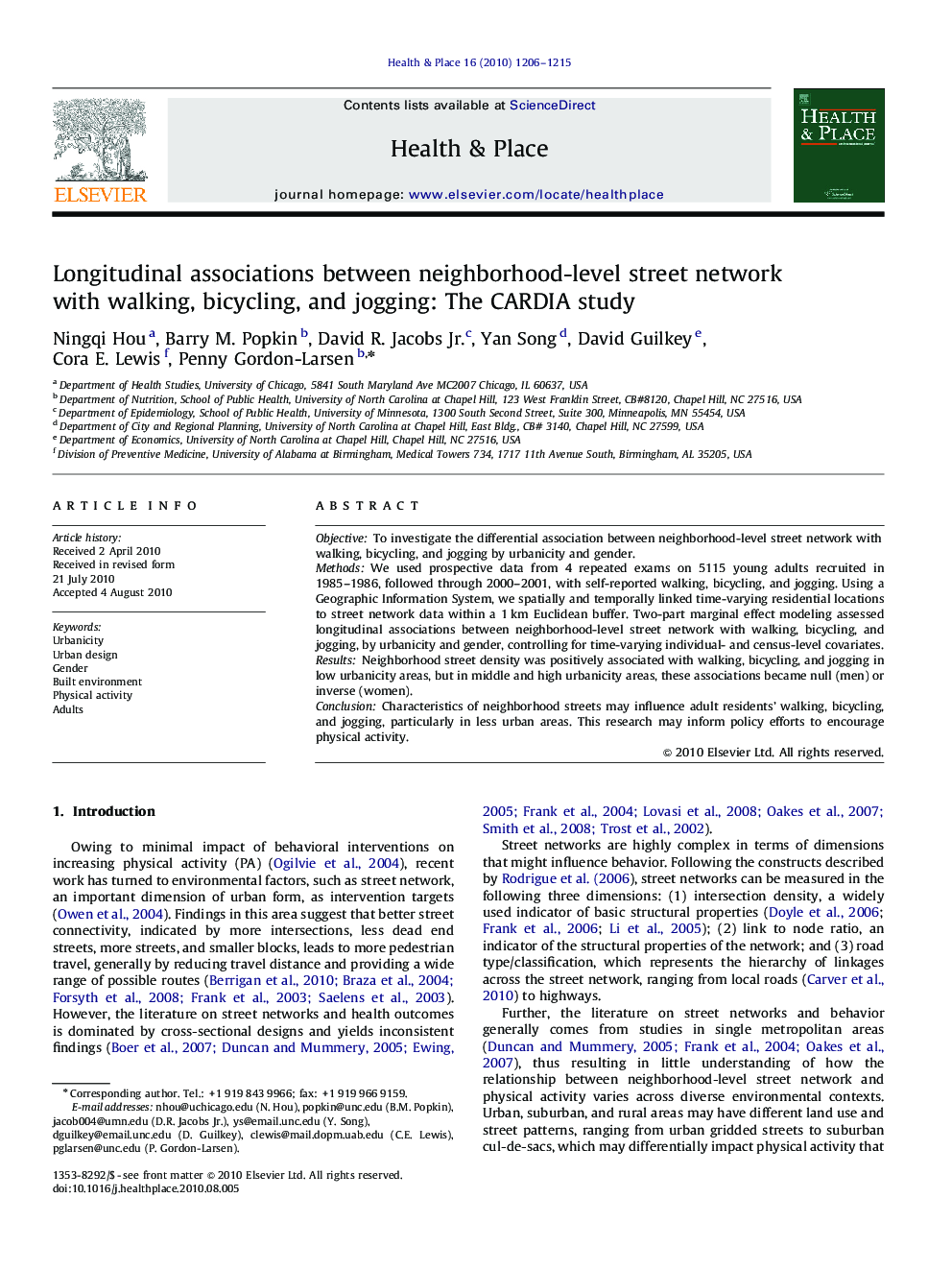| Article ID | Journal | Published Year | Pages | File Type |
|---|---|---|---|---|
| 1048607 | Health & Place | 2010 | 10 Pages |
ObjectiveTo investigate the differential association between neighborhood-level street network with walking, bicycling, and jogging by urbanicity and gender.MethodsWe used prospective data from 4 repeated exams on 5115 young adults recruited in 1985–1986, followed through 2000–2001, with self-reported walking, bicycling, and jogging. Using a Geographic Information System, we spatially and temporally linked time-varying residential locations to street network data within a 1 km Euclidean buffer. Two-part marginal effect modeling assessed longitudinal associations between neighborhood-level street network with walking, bicycling, and jogging, by urbanicity and gender, controlling for time-varying individual- and census-level covariates.ResultsNeighborhood street density was positively associated with walking, bicycling, and jogging in low urbanicity areas, but in middle and high urbanicity areas, these associations became null (men) or inverse (women).ConclusionCharacteristics of neighborhood streets may influence adult residents’ walking, bicycling, and jogging, particularly in less urban areas. This research may inform policy efforts to encourage physical activity.
